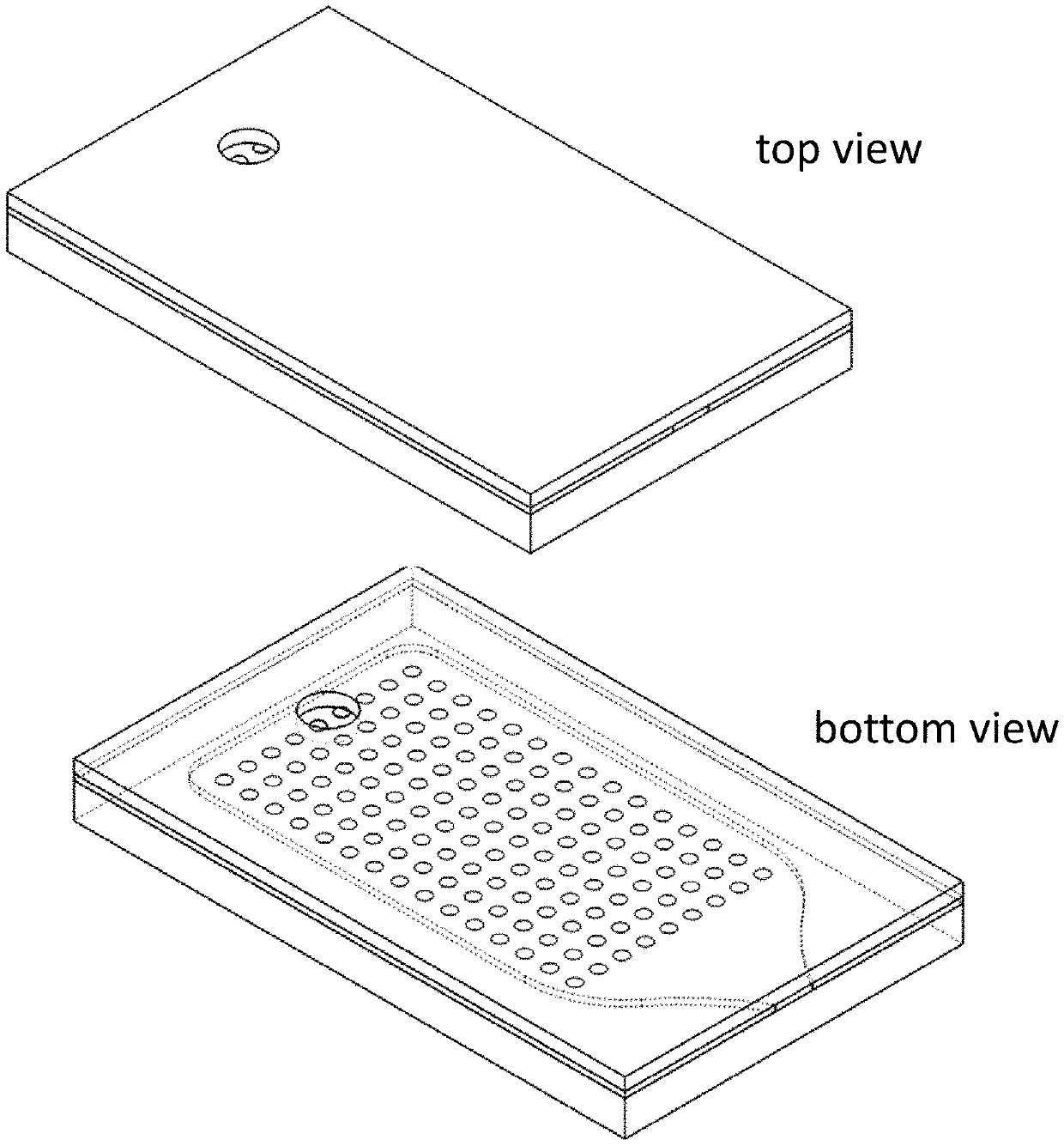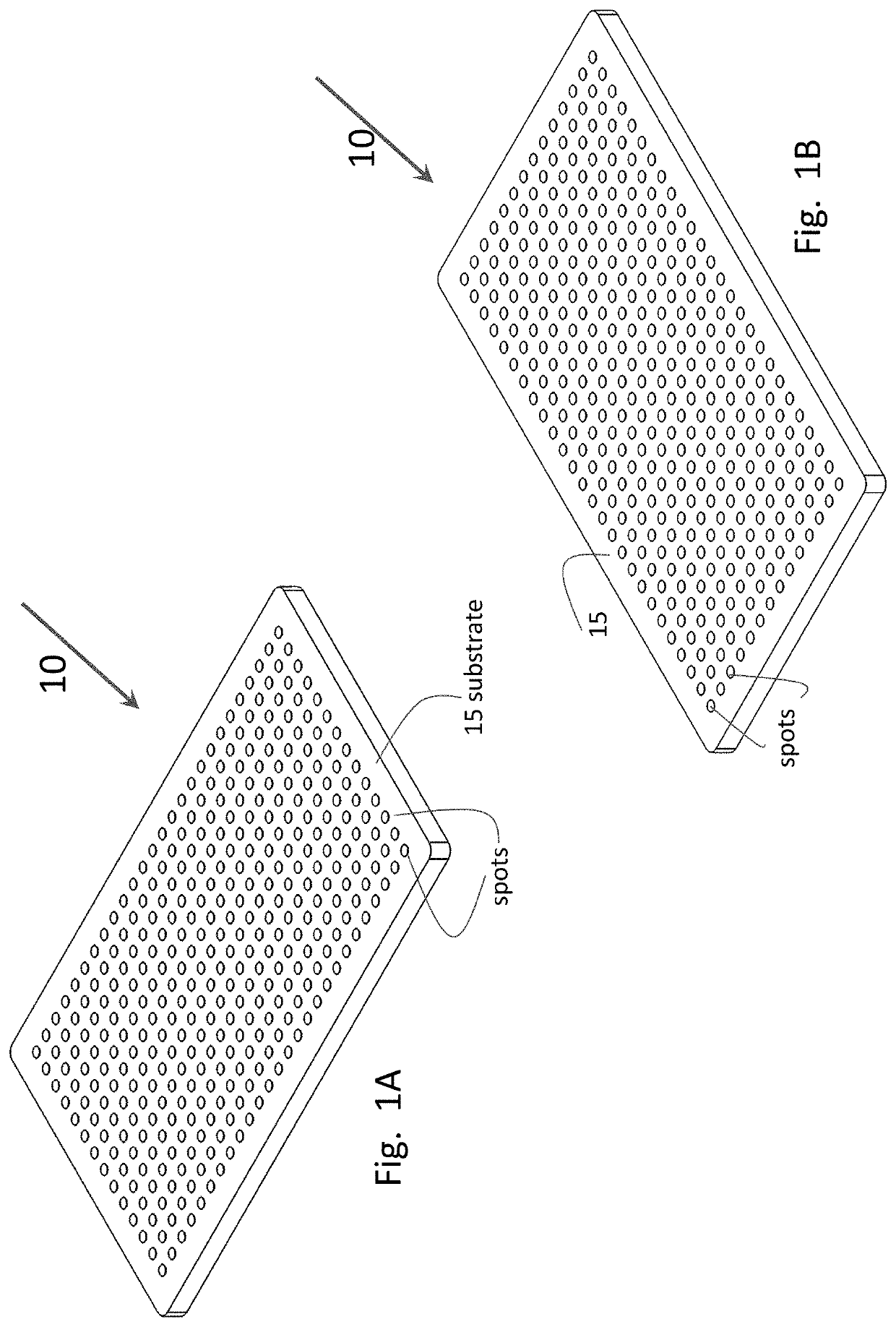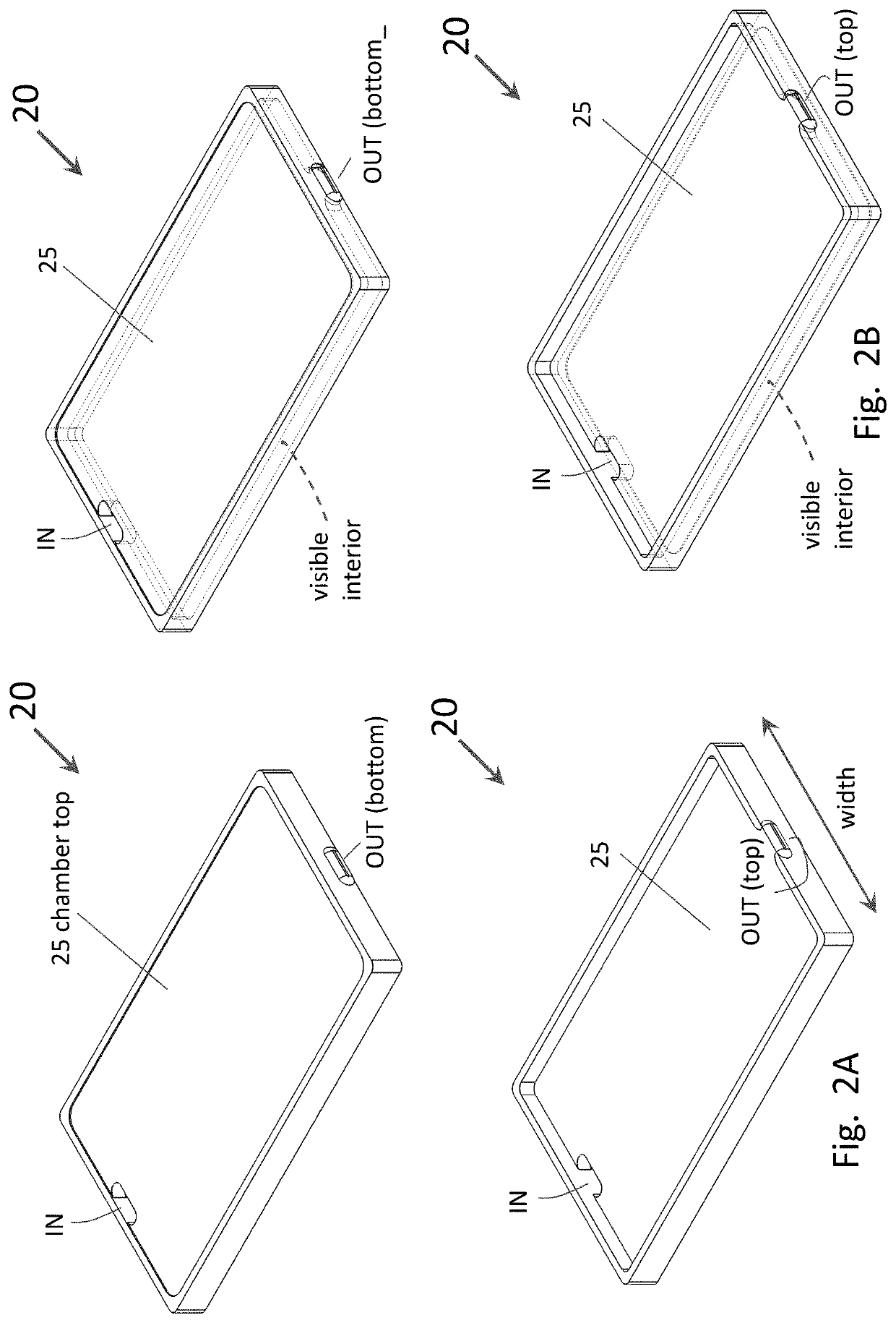Miniaturized DNA microarray for small-volume sample processing
a dna microarray and small-volume technology, applied in biochemistry apparatus and processes, laboratory glassware, centrifuges, etc., can solve the problems of long incubation time and effort to conserve, and achieve the effect of reducing the risk of sample loss, and accelerating reaction tim
- Summary
- Abstract
- Description
- Claims
- Application Information
AI Technical Summary
Benefits of technology
Problems solved by technology
Method used
Image
Examples
example 1
on of a Miniaturized DNA Microarray
[0068]The microarray can be fabricated as described herein, although some variation can be incorporated into the fabrication procedure as known to those of skill in the art. In particular, the microarray is fabricated on 0.7 mm-thick glass substrates which are cut to dimensions of 11.0 mm in length and 6.75 mm in width. The substrates are treated with epoxysilane to create a surface to which amine-modified oligonucleotide probes can bind. (FIGS. 1A-B) The epoxysilane coating process proceeds as follows. First, the glass substrates are plasma treated with oxygen in a plasma asher (see for example, the Nordsom March plasma asher at nordson.com / en-us / divisions / march) for two minutes at 80 W power. The plasma-cleaned substrates are then immediately immersed in a freshly made solution of 2% (3-glycidyloxypropyl)trimethoxysilane in 95% ethanol and incubated for 16-18 hours at 37° C. with mixing. Following the incubation period, the substrates are removed...
example 2
dization Using the Mini Micro Array
[0072]In one example, the DNA which is hybridized to the probes on the array is fluorescently labeled with a 5′ Alexa Fluor 488 fluorophore. The DNA may be visualized on the array using a fluorescence microscope. One such example is show in FIGS. 21 A-B. As shown in the figures, there are two identical probes on the array surface and fluorescently-labeled complementary DNA is hybridized to the probes. The locations of successful hybridization are imaged using a fluorescence imaging system. Such imagining systems are well known to those of skill in the art.
[0073]To enable ease of handling and imaging of the assembled microarrays, a custom fixture (chiplet) as shown in FIGS. 22 A-B was designed and constructed. The fixture has the same footprint as that of a 96-well plate, enabling compatibility with many standard laboratory instruments (e.g., microscopy stages). The fixture is comprised of two anodized aluminum plates and a rubber gasket. The plates...
PUM
| Property | Measurement | Unit |
|---|---|---|
| size | aaaaa | aaaaa |
| size | aaaaa | aaaaa |
| size | aaaaa | aaaaa |
Abstract
Description
Claims
Application Information
 Login to View More
Login to View More - R&D
- Intellectual Property
- Life Sciences
- Materials
- Tech Scout
- Unparalleled Data Quality
- Higher Quality Content
- 60% Fewer Hallucinations
Browse by: Latest US Patents, China's latest patents, Technical Efficacy Thesaurus, Application Domain, Technology Topic, Popular Technical Reports.
© 2025 PatSnap. All rights reserved.Legal|Privacy policy|Modern Slavery Act Transparency Statement|Sitemap|About US| Contact US: help@patsnap.com



